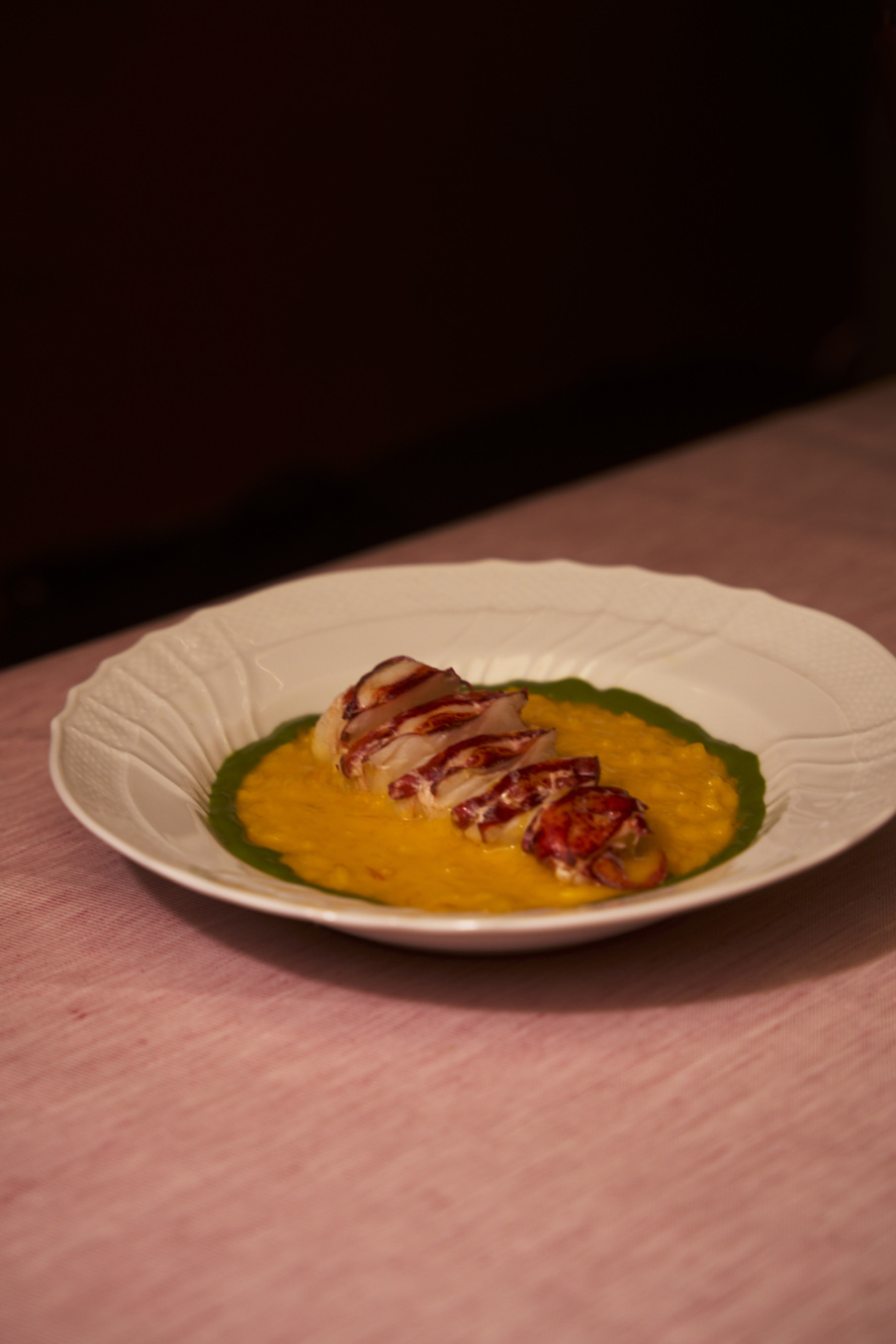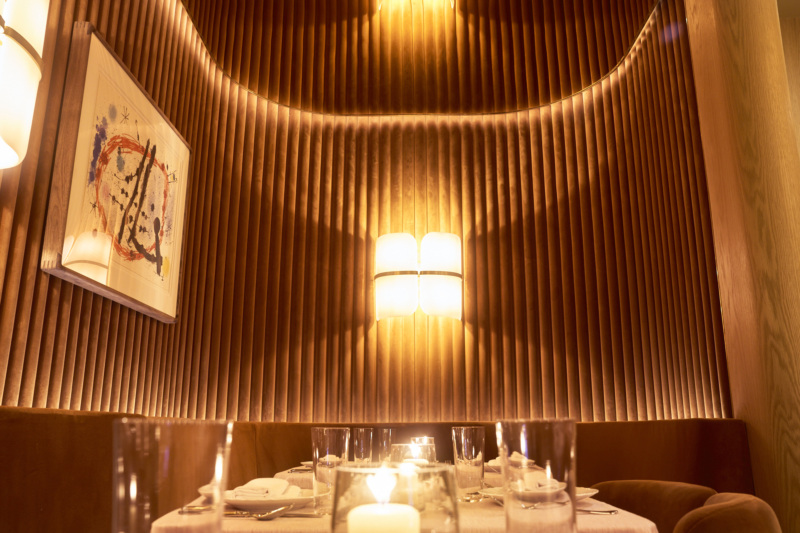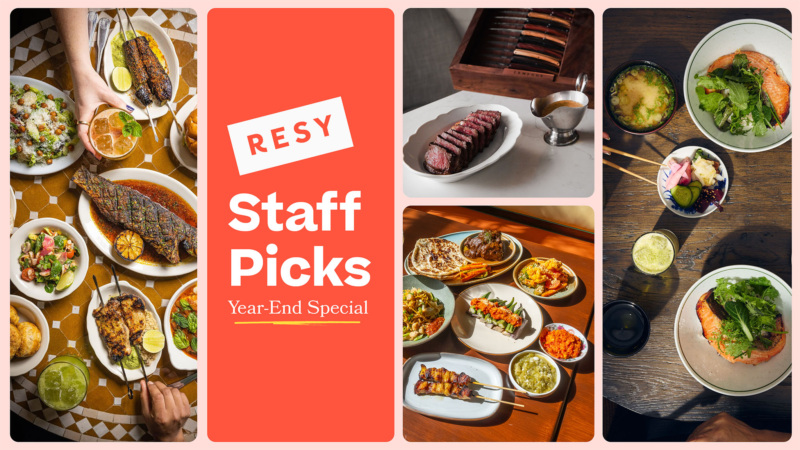
Muse, Santa Monica’s Newest Fine Dining Destination, Was Born in a Dorm Room
Few fine dining restaurants can claim to have started in a college dorm room, but then again, Muse isn’t like most restaurants. Chef-owner Fardad Khayami, who grew up in a large Persian family in London that frequently hosted festive gatherings, had no intention of getting into the hospitality business. He was a finance major at USC, but our past has a funny way of catching up with us, and it wasn’t long before Khayami started cooking for himself and his roommates, and eventually, much of his dorm.
The dorm room dinner party concept that Khayami founded with his college roommate, David Gelland, was called Museum. “By our senior year, we had served about 3,000 people and had 6,000 on the waiting list,” he says. One fan reached out to Khayami to offer financial backing for a more traditional restaurant. Gelland and Khayami accepted the offer, then spent nearly a year finding a location and convincing the landlord to lease to two 20-somethings with no formal experience in the business. It worked.
In August, Khayami and Gelland opened Muse in Santa Monica, taking over the former Mason Supper Club space. “Our thought process was probably clouded by passion,” says Khayami. “But to truly give the level of experience that we want— to find the best wines, the best produce, the best linen for tablecloth, to have a viable business—we couldn’t run it out of an apartment.”
Muse may be small (35 seats, with four spots at the bar), but the experience is robust. With a French-leaning menu, valuable artwork on the walls, and a sultry vibe, this is a grown-up restaurant that belies the youth of its operators. Curious to learn more? Here’s everything you need to know before you go.


The menu is personal
The menu is an opulent romp mostly through classic French cuisine, though Khayami employs a few modern touches and plenty of seasonal produce to keep things from feeling too heavy. A recent menu included heirloom tomatoes paired with Comté fondue and drizzled with vinaigrette, and a rack of lamb a la Provençal—basted and seared in two kinds of Dijon mustard, then crusted with basil, mint, and rosemary. It has already proven itself as a fan favorite.
“There’s two ways of explaining the menu,” Khayami says. “The first one being the structure of it. It’s a la carte, but coursed out in four different stages—salads and canapes, carbs, proteins, and desserts. That comes purely from my family and how we like to enjoy meals,” he says.
The second way is also through the lens of Khayami’s childhood memories. The rack of lamb, for example, is a nod to Khayami’s grandfather’s lamb, which a young Khayami loved to sneak bites of despite his parent’s admonishments. The lobster and saffron risotto was inspired by family trips to southern France, where the lobsters at hole-in-the-wall seafood spots were painted with a gorgeous saffron butter and lemon sauce.


The interior is dramatic, in a good way
Though Muse sits just off PCH across the street from the California coastline, don’t expect the typical airy, light-filled dining room you might find near the beach. Instead, Khayami and designer Marc Ange took inspiration from the moody, mid-century styles of France and Italy. “We wanted very classic interiors,” says Khayami. “There’s a lot of wood, a lot of stone, and beautiful deep fabric in the restaurant.” From the velvet seats and the warm sconced lighting, to the sensual curves of the furniture and fluted wood paneling, the space feels intimate, sexy, and lush. It’s as opulent as the dishes in front of you. Or, as Khayami likes to say: “It feels like it’s hugging you.”
The drinks are very intentional
Muse has a bar with both a cocktail menu and a well-crafted wine list thanks to Gelland, who has stepped into the role of beverage director. “David studied art history at USC, and his love of sharing stories with people really comes through in the cocktail menu,” Khayami says.
But don’t expect a deep selection of whiskeys, mezcals, and other spirits. Gelland sourced from only a few distilleries with rich family legacies and sustainable practices. From there, he built a cocktail menu that splits into produce-forward drinks and spirit-forward ones. Overseeing the wine list is Matthew Rogel, who previously curated Felix Trattoria’s wines. He gravitates toward multi-generational vintners and those maintaining sustainable, organic practices, primarily from France, Italy, and Spain.


Keep eyes on the blue-chip artwork
During the Museum days back in their dorm, Khayami and Gelland would display artwork by their fellow students on the walls. These days, the paintings on display at Museum have received a considerable upgrade.
The restaurant has partnered with a private collection in London and Paris (though Khayami would not give a name), that supplies some heavy hitters. Currently on display are paintings from the Spanish surrealist Joan Miró. Expect the art to rotate once or twice a year. “We’re still finalizing the next exhibit right now, but it might be an exhibition of works from Willem de Kooning,” Khayami teases.


Dessert is a family affair
“The pastry chef of the restaurant is my younger brother, Nikdad,” Khayami says. Nikdad trained formally under pastry chefs in Paris, most notably Maxime Frédéric, before joining his older brother at Muse to helm desserts. An early fan favorite is the vanilla St. Honore, which Nikdad tweaks “to give the cake a crispiness and a lightness,” says Khayami. The base of the cake is made with phyllo dough (adding to the crispiness), and a very thin glaze of chocolate is brushed on top. Other sweets include a chocolate caramel tart and a selection of housemade ice creams and sorbets, an appropriately sweet note to go out on.
Oren Peleg is a journalist and screenwriter. He currently contributes to Eater LA, Los Angeles, The Infatuation, and hosts the Not Billable podcast. You can follow him here. While you’re at it, follow Resy, too.
Discover More

Stephen Satterfield's Corner Table



















